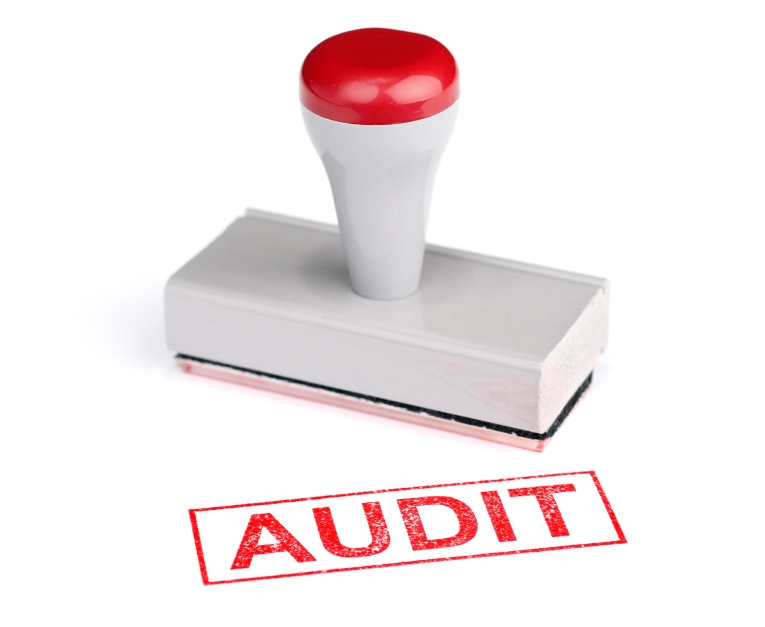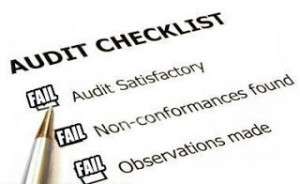What is the Difference Between Audit Review and Compilation?

Audits, reviews, and compilations are three distinct financial statement services. Each has its own level of assurance and provides different confidence levels. Knowing the differences between these services is key for firms needing to satisfy their financial reporting needs. What is the difference between audit review and compilation?
Audit Review and Compilation Differences
Audits present the greatest assurance. They include a comprehensive review of financial statements and related documents. Reviews provide limited assurance. They involve analytical processes and inquiries. Compilations supply no assurance. They just show financial info based on client-supplied data.
In an audit, CPAs perform extensive tests, evaluate internal controls, and get proof, to verify various accounts in the chart of accounts, to express a view on whether the financial statements are free from material misstatement. This meticulous process offers the highest assurance to users relying on the credibility and accuracy of the financial statements.
Review engagements, however, are a more limited process. CPAs do analytical procedures and ask questions about the financial info provided by management. The aim is to attain moderate assurance that no material changes are necessary for the financial statements to be in compliance with accounting principles.
Compilations do not give any assurance or express any opinion on the dependability or accuracy of the financial info presented. Rather, compiled financial statements are prepared based on info supplied by management without any confirmation or substantial testing by CPA firms.
Pro Tip: Companies should comprehend their particular requirements when picking between an audit, review, or compilation engagement. Consider things such as regulatory requirements, stakeholder expectations, and the level of confidence needed before making a decision.
Explanation of Audit
To understand the explanation of audit in the article “What is the Difference Between Audit, Review, and Compilation?”, dive into the section that focuses on the definition and purpose of audit along with the key features and characteristics. This will provide you with a comprehensive understanding of the audit process.
Definition and Purpose of Audit
An audit is an evaluation of an organization’s financials, processes, and controls. Its goal is to provide an independent and impartial view of the correctness, reliability, and consistency of financial information with fixed rules and regulations.
This type of audit guarantees the correctness of financial statements by verifying that they are without any significant misstatements. It also offers assurance to stakeholders like investors, creditors, and regulators that the organization’s financial data can be trusted. Additionally, it uncovers areas of operational inefficiency or internal control weaknesses, allowing management to take corrective measures.
Moreover, audits are done by competent auditors who follow Generally Accepted Auditing Standards (GAAS). These guidelines guarantee uniformity and transparency in the auditing process.
In practice, auditors review documents, interview appropriate people, perform analytical tests, and assess internal controls. This all-encompassing approach allows auditors to gain a deep understanding of the organization’s operations and financial position.
Surprisingly, according to a 2021 PwC report, audits have moved beyond just making sure of compliance. They now give valuable information on business endurance and sustainability strategies for companies in different industries.
Key Features and Characteristics of Audit
An audit is a review of financial records, statements, and transactions, done to make sure everything is correct, legal, and follows rules. It gives an outside evaluation of an organization’s financial condition and pinpoints any errors or fraudulent activities. The table below shows the main elements of an audit:
| Feature | Description |
|---|---|
| Independence | Auditors have no bias. |
| Objectivity | Auditors must be impartial. |
| Confidentiality | Auditors keep info private. |
| Professional Skepticism | Auditors should doubt and check evidence. |
| Compliance Testing | Auditors check if records are lawful. |
Apart from these basics, audits also include risk assessment, internal controls evaluation, and report production. All these ensure an audit supplies trustworthy financial info. I remember an infamous case – Enron Corporation.
The auditors missed or seamed to overlook huge accounting mistakes which caused the company to fall apart. This incident showed how important it is for auditors to be very careful and spot any potential warning signs during their work. The key features mentioned above are the base of an effective audit process. Sticking to them, auditors help make sure financial operations are honest, accountable, and transparent.
Explanation of Review
To understand the section “Explanation of Review” with sub-sections “Definition and Purpose of Review” and “Key Features and Characteristics of Review,” delve into the details of the review process. Learn the purpose behind conducting reviews and gain insights into the essential features and characteristics that define the review process.
Definition and Purpose of Review
Reviews have a professional purpose – to evaluate and provide feedback on a given subject. Analyzing and assessing strengths and weaknesses with the goal of improvement is key!
Moreover, reviews need objectivity, expertise, and benchmarks for unbiased assessments that foster growth.
To maximize review effectiveness, it is essential to identify areas for improvement and acknowledge achievements. This helps motivate and sustain progress.
Key Features and Characteristics of Review
Reviews are comprehensive evaluations and assessments of products, services, or experiences. They provide a valuable resource to help consumers make informed decisions.
Here are some features that make reviews essential in today’s digital age:
- Objective: Reviews should be unbiased and based on facts and evidence.
- Credibility: Reviews should come from reputable sources or verified users.
- Transparency: Reviews must disclose any potential conflicts of interest.
- Accuracy: Reviews should present accurate info without exaggeration.
- Detail: Reviews should include specific details to help readers understand the product or service.
- Impartiality: Reviews should avoid favoring any particular brand or company.
- Clarity: Reviews should be written in clear, concise language.
When creating reviews, it is important to consider the target audience and provide balanced perspectives. Here are some tips for effective reviews:
- Identify your audience: Tailor the review to the needs and preferences of your readers. Consider their background knowledge and interests when presenting information.
- Provide evidence: Support your statements with evidence such as personal experiences, statistics, or expert opinions. This increases the credibility of the review.
- Include visuals: Use images or videos to supplement the written content. Visual aids can help readers better understand the review.
- Be consistent in formatting: Use consistent headings, bullet points, or numbered lists throughout the review. This makes it easier to navigate.
By following these suggestions, reviewers can produce reliable assessments that benefit consumers. The key features and characteristics discussed help to ensure the effectiveness and credibility of a financial statement review.
Explanation of Compilation
To understand Compilation with its sub-sections of Definition and Purpose, and Key Features and Characteristics, dive into the detailed explanation. Discover the importance of compiling financial statements and the roles it plays in ensuring accuracy, consistency, and compliance with established accounting standards. Explore how compilations differ from other financial statement services.
Definition and Purpose of Compilation
Compilation is the process of changing source code written in a programming language to machine code that a computer can directly execute. This transformation is done by a compiler which looks at the source code and changes it to instructions the computer can understand.
The reason for compilation is to build an executable program that can run on a computer. It lets coders write their code in a higher level language, like C++ or Java, that is easier to read and comprehend than machine code. The compiler then converts the higher level code to lower level machine code, which is special to the computer architecture where the program will operate.
While compiling, the compiler looks for syntax and semantic errors in the source code. Syntax errors are mistakes in the shape or structure of the code, and semantic errors are logical problems that may cause the program to not work correctly. By finding these errors during compilation, coders can fix them before running the program.
In addition to changing source code to machine code, compilers often make optimizations to better the efficiency and performance of the generated executable. These optimizations involve deleting dead code, changing the order of instructions for better cache utilization, and putting small functions into the code for faster execution.
To guarantee successful compilation, coders need to understand the programming language they are using and follow its syntax rules. They also have to be familiar with any libraries or frameworks they are using in their code.
Key Features and Characteristics of Compilation
Compilation is a process that converts human-readable source code to machine-readable code. It has key features and characteristics that improve the efficiency and performance of the program. Let’s examine these in the form of a table:
| Feature/Characteristic | Description |
|---|---|
| Optimization | Compilation has optimization techniques to enhance runtime performance. It removes redundant code, simplifies complex operations, and improves memory management. |
| Error Checking | Compilation checks the source code for syntax errors, logical mistakes, and other issues to ensure the resulting program is bug-free. |
| Portability | Compiled programs can run on different platforms, without needing a compiler. This makes applications convenient and accessible. |
| Binary Code Generation | Compilation generates machine-specific binary code that is directly executable by the hardware. This enables efficient execution and resource utilization. |
Compilation also includes linking external libraries, managing dependencies, and generating executable files.
It’s important to understand its role in maximizing software performance and minimizing errors or compatibility issues. Developers should stay updated with advancements in compilers to get the best output from their code.
Compilation is an integral part of software development. Don’t miss the opportunity to upgrade your coding skills and produce quality applications!
Comparison between Audit Review and Compilation
To understand the comparison between audit, review, and compilation, you need to explore the scope of work, level of assurance provided, purpose and objectives, and reporting requirements. This section details the distinctions among these three financial assessment approaches, giving you a clear understanding of their unique features and applications.
Scope of Work
To comprehend the scope of work in audits, reviews, and compilations, it is necessary to look at the specific tasks and responsibilities assigned to each. Examining these key elements can help an organization decide which service suits their needs.
The table below breaks down the scope of audits, reviews, and compilations:
| Service | Audit | Review | Compilation |
|---|---|---|---|
| Objective | Assurance on financial statements | Limited assurance on financial statements | No assurance; based on management’s representations |
| Procedures | Extensive testing of transactions and balances | Limited analytical procedures and inquiries | No testing or verification performed |
| Adjustments | Material misstatements must be corrected by management | Material misstatements should be corrected by management | Recommendations for material misstatements may be made but not required to be corrected |
It’s also important to note that audits require independence and GAAS (Generally Accepted Auditing Standards). Reviews offer limited assurance, but don’t need full GAAS compliance. Compilations are based solely on management’s representations, with no independent verification.
Organizations can pick the right service depending on their needs and objectives. For instance, if a company requires comprehensive assurance with material misstatement correction, an audit is preferable. If they want some level of assurance without extensive testing and adjustments, a review is best. If there’s no need for assurance beyond compiling financial info from management without verification or adjustments, a compilation is the way to go.
To get better results, some suggestions should be taken into account:
- Define objectives: Understand your goals and requirements before selecting a service. This will help meet expectations and lessen confusion.
- Communicate: Open communication between client and service provider is essential for a smooth process. Clarify expectations, timelines, and other info for an accurate assessment.
- Provide correct info: To get reliable results, give all financial data to the service provider. Sharing documentation openly will help a comprehensive evaluation of financial statements.
- Engage qualified professionals: Choose experienced and qualified professionals who understand auditing, reviewing, and compiling financial statements. Their expertise will ensure accuracy and provide useful insights.
By understanding the scope of audits, reviews, and compilations, organizations can make wise decisions regarding their financial reporting while optimizing resource allocation for maximum effectiveness.
Level of Assurance Provided
The assurance provided in audits, reviews, and compilations varies greatly. An audit engagement gives the highest level of assurance, as the auditor expresses their opinion on the financial statements. This means the statements are accurate in material respects.
To better understand the differences in assurance levels, let’s compare in a table:
| Audit | Review | Compilation | |
|---|---|---|---|
| Level of Assurance | High | Moderate | None |
| Objective | Obtain assurance about accuracy of financial statements. | Provide assurance that material modifications meet financial reporting frameworks. | Help management prepare statements without offering assurance. |
| Procedures Performed | Evidence, analytical procedures, and physical inventory counts. | Inquiry and analytical procedures to assess material modifications. | Primarily gathering and organizing data provided by management. |
It is also important to note that auditors follow GAAS and reviews/compilations follow SSARS. To offer reliable information and maintain high ethical standards, auditors should maintain independence and objectivity, apply professional skepticism when evaluating evidence and risks, and properly document their work.
Purpose and Objectives
Let’s explore what each engagement involves. Here’s a table to help:
| Engagement Type | Purpose | Objectives |
|---|---|---|
| Audit | Express opinion on financial statements |
|
| Review | Assess if financial statements are plausible and credible |
|
| Compilation | Present financial info in a structured manner |
|
Note: Audits offer highest assurance while reviews provide limited assurance. Compilations don’t express opinion.
Companies need to understand these distinctions to comply with regulations, safeguard investments, and help economic decision-making. By understanding the objectives of each engagement type, businesses can make informed decisions that match their needs.
Don’t miss out on improving your company’s financial situation. Take action now to gain credibility and secure a prosperous future.
Reporting Requirements
For each audit, review, and compilation engagement, reporting requirements differ to fulfill the specific needs. These ensure the financial info is shown accurately and can be trusted by users. Let’s explore further!
Check out the table below to get a better understanding of the reporting requirements:
| Type of Engagement | Reporting Requirements |
|---|---|
| Audit | Auditors’ report |
| Review | Review report |
| Compilation | Compilation report |
The table illustrates the reporting requirements for every engagement. Audits require an auditors’ report, reviews a review report, and compilations necessitate a compilation report.
It is key to note that these requirements have been developed over time. This is to guarantee transparency and reliability in financial reporting. Abiding to these requirements helps preserve trust and assurance in financial statements.
Differences Between Audit Review and Compilation
Here, we looked at the main differences between audit, review, and compilation. These three financial services are important for providing reliability and trustworthiness of financial statements.
Audit involves a thorough look into an organization’s records and systems to give an impartial point of view on its financial position. On the other hand, review offers limited certainty by examining financial info using analytical procedures and inquiries. Compilation means presenting financial information in the form of financial statements without giving any assurance.
It is essential to note that while both audit and review need the participation of a certified public accountant (CPA), compilation can be done by people without any special qualifications. This difference is crucial as it shows the level of expertise and scrutiny involved in each service.
Moreover, these distinctions can be traced back to the history of accounting procedures. Auditing has been done for centuries, with evidence from old civilizations such as Egypt and Rome. As trade and commerce increased, the need for separate confirmation of financial information became obvious.
Frequently Asked Questions

1. What is an audit?
An audit is a comprehensive examination of a company’s financial records, systems, and controls to determine their accuracy, reliability, and compliance with applicable laws and regulations. It is conducted by an independent certified public accountant (CPA) and involves assessing risks, performing tests, and issuing an opinion on the fairness of the financial statements.
2. What is a review?
A review is a less extensive examination of a company’s financial statements compared to an audit. It involves analytical procedures, inquiries, and discussions with relevant individuals to provide limited assurance that the financial statements do not contain material misstatements. While a review is also performed by a CPA, it does not involve testing or obtaining supporting evidence to the same extent as an audit.
3. What is a compilation?
A compilation involves the preparation of financial statements based on information provided by the company’s management, without the CPA performing any verification or obtaining a level of assurance. The CPA organizes and presents the financial information in the format required, but does not express an opinion or provide any assurance on the accuracy or completeness of the statements.
4. When is an audit required?
An audit is usually required by external stakeholders, such as investors, lenders, or government agencies, who rely on the credibility and accuracy of the financial statements. Publicly traded companies are generally mandated to have an annual audit by regulatory bodies. Additionally, some private companies may also be required to have an audit as per contractual agreements or specific industry regulations.
5. When is a review appropriate?
A review is often appropriate for privately held companies that need to provide a degree of assurance to shareholders or other parties, but do not require a full audit due to lower risk levels or less reliance on financial statements. It can also be a preliminary step for a company transitioning from compilation to audits, allowing them to gain confidence in their financial reporting process.
6. When is a compilation sufficient?
A compilation is typically sufficient for small businesses or organizations that do not have external reporting requirements or significant complexities in their financial transactions. It can be suitable for internal use, tax filing purposes, or as a starting point for more formal financial reporting and analysis.

















Leave a Reply